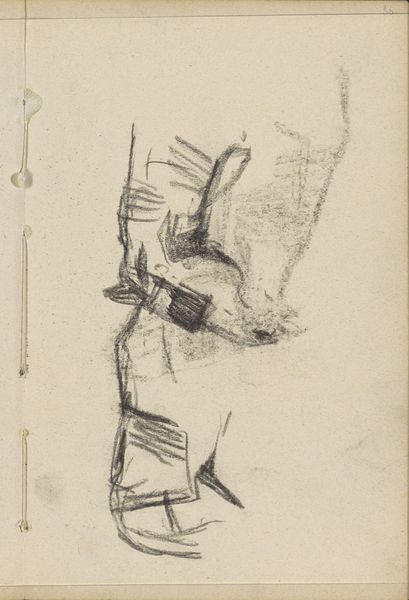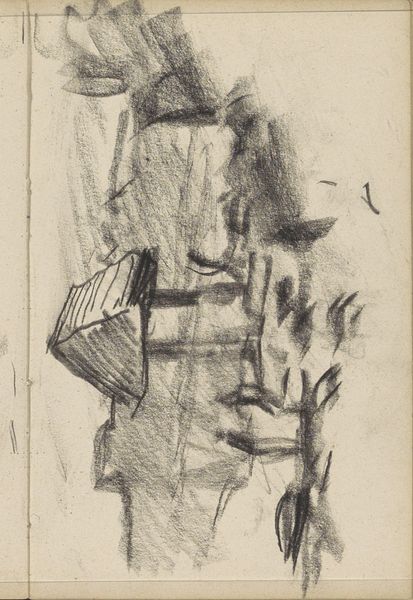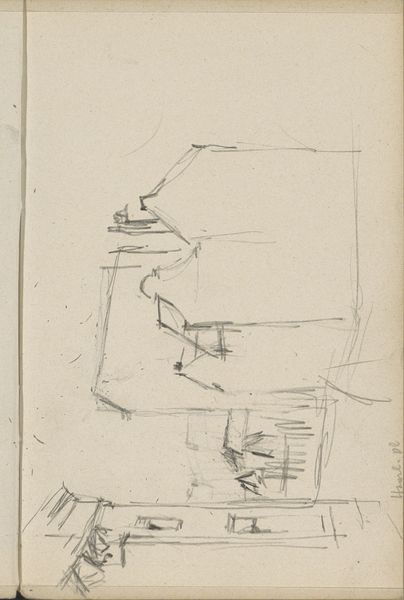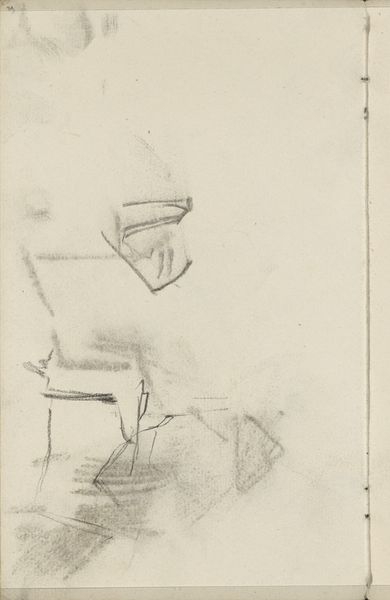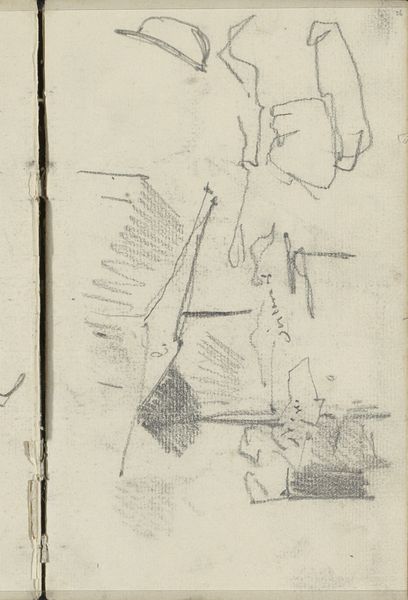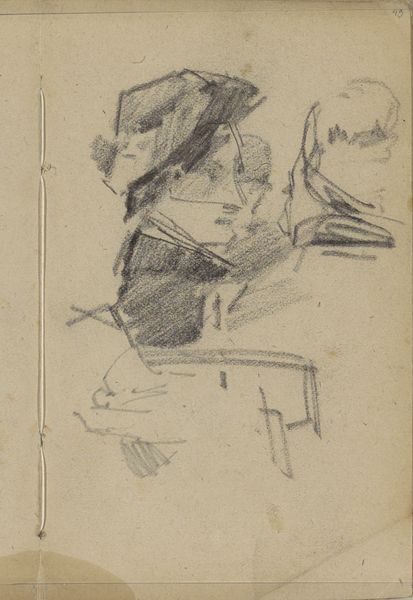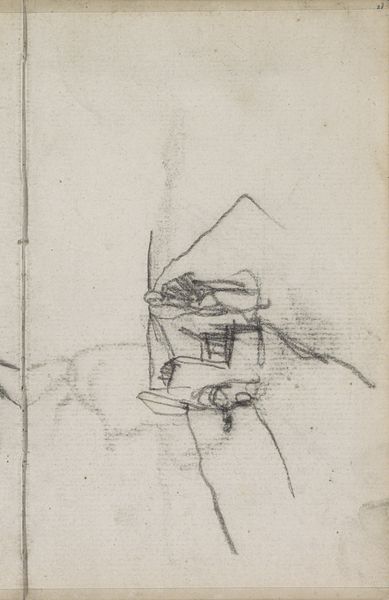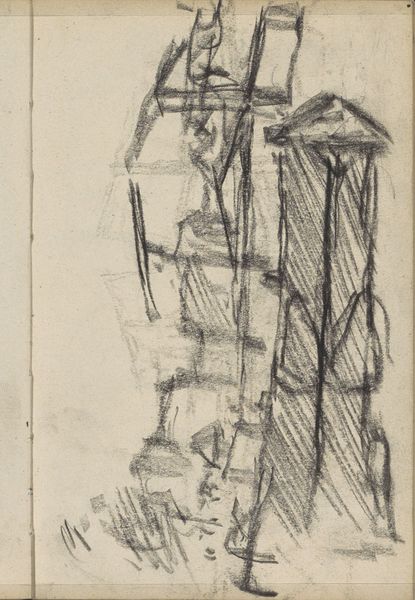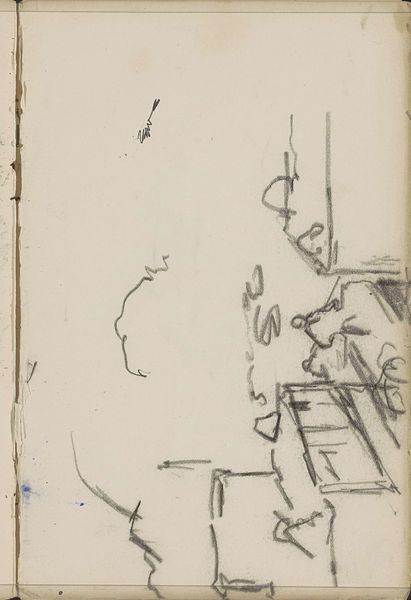
Copyright: Rijks Museum: Open Domain
Curator: Looking at this artwork, a graphite drawing titled "Paardenhoofd met oogkleppen"—"Horse's Head with Blinders"—created around 1909 by George Hendrik Breitner, which now resides in the Rijksmuseum… the most immediate thing that strikes me is how raw and fleeting the image feels. Editor: Fleeting, yes! It's almost as if the artist caught a glimpse of the horse and quickly sketched it before the moment was gone. I love how the sketchiness conveys this ephemeral quality. Curator: Precisely. The sketch reminds me how artists used these animal symbols across cultures; horses often represent strength, freedom, or even a kind of untamed wildness. But here, with the inclusion of blinders, we get something different. There’s a tension introduced, between power and constraint. The eye covering changes everything. Editor: Absolutely! The blinders shift the symbolic reading; they evoke a sense of control. Think of it—reducing the horse's vision seems a bit cruel. Perhaps it reflects societal constraints back in that era. The horse, once wild and free, becomes harnessed and directed. There is a loss of innate capability. Curator: Interesting. Horses with blinders appear throughout art history – not just as representations of labor or transport, but also in military contexts. I wonder if Breitner was interested in alluding to broader themes of militarization or the industrial complex, or something uniquely personal. It almost forces us to reflect on the subjugation involved. Editor: That feels like a valid perspective. For me, the simplicity is affecting. The stark black lines create a potent image; it invites empathy and encourages you to reflect on hidden possibilities. It’s the stark quality in how the eye coverings, which symbolize a denial of vision and freedom, invite our deeper emotional investigation. Curator: And in this sense, such pieces demonstrate that, through rendering animals and everyday elements of our existence with a distinctive symbolic charge, our perspective as a people is remembered for the many years which come. Editor: A moment of visual reckoning and an inquiry on imposed structures all rendered on a paper’s delicate surface. What a journey this has been!
Comments
No comments
Be the first to comment and join the conversation on the ultimate creative platform.
